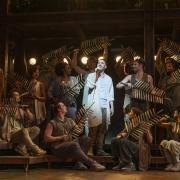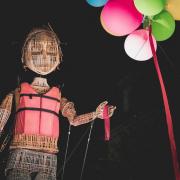Art expert Anthony Smith takes a look at the magnificent collection of Rembrandt prints on show at Norwich Castle gallery

Before I continue, I would like to say just one thing: Rembrandt: Lightening the Darkness is definitely a must-see exhibition.
We are privileged to have such intimate access to these works, undoubtedly some of the most important fine art prints ever created, and the chance to look at them as if they were in our home. The Norwich Castle gallery even provides magnifiers to enhance our viewing experience.
The exhibition provides a unique opportunity to view a huge selection (83) of Rembrandt’s prints; some of them exceptionally rare, important in art history terms as well as being simply masterful works of art. These are in our Norwich Castle collection. There are also a small number of oil paintings loaned from the Royal Collection, the National Gallery and the National Gallery of Scotland.

This is an exhibition that can open our eyes to the genius and observational skills of Rembrandt. Some of the works are minute in scale, yet this lack of size in no way diminishes the skill of the artist nor the impact the works have on us. Simple scratches on the etcher’s plate enabled Rembrandt to create images representing age, frailty, or personality. Such is his genius.
These works don’t scream “LOOK AT ME!” but rather beckon you gently to enter into a long-lost world, but one where the concerns and issues are identical to those we face today: relationships, wealth, love, religion, illness and death. In many respects these are as savage as a Basquiat in their execution, with what appear to be random cuts across the plate, yet each is intentional as can be seen in the final image.
Walking slowly from work to work, taking time to actually look at them in such a welcoming, unhurried environment, you are immediately hit by the intimacy of the works. These are not fashionable portraits or homages to beauty. They capture real people of the 17th century, warts and all, who have lived and who bear the scars of life.
Be aware of Rembrandt’s revolutionary use of light; this creates the drama in much of his work. The Flight into Egypt: a night piece 1651 is an example. Compare it to works of his contemporary, Jan Lievens, a talented artist, but lacking the dramatic impact of looking at Rembrandt’s work.
Johannes Vermeer’s use of light comes close to Rembrandt’s in his 1665 work Girl with a pearl earring, yet Vermeer’s light is stark, obvious. In Rembrandt’s work it is as if a candle or a soft moonlight has been directed on the essence of the subject.
Also please take the time to look at the eyes of his subjects: they sparkle with life. His Self-portrait 1639, is just one superb example of this. As an added attraction, there are rooms for the youngsters amongst us to dress up in costume and take selfies as well as an interesting display of etching tools and the consequences of later work on original plates.
As I left the exhibition, it was somewhat uplifting for me to think that Rembrandt never ventured beyond his native Holland… yet his genius travelled the world.
Rembrandt: Lightening the Darkness at Norwich Castle ends on January 7, so please do try to see it.



























